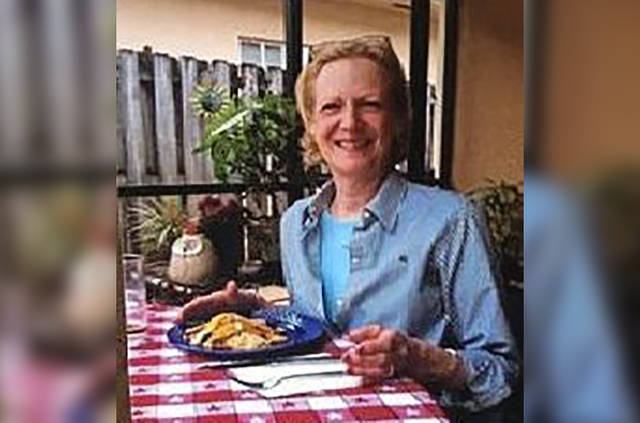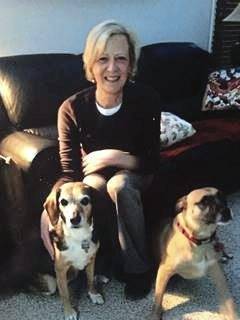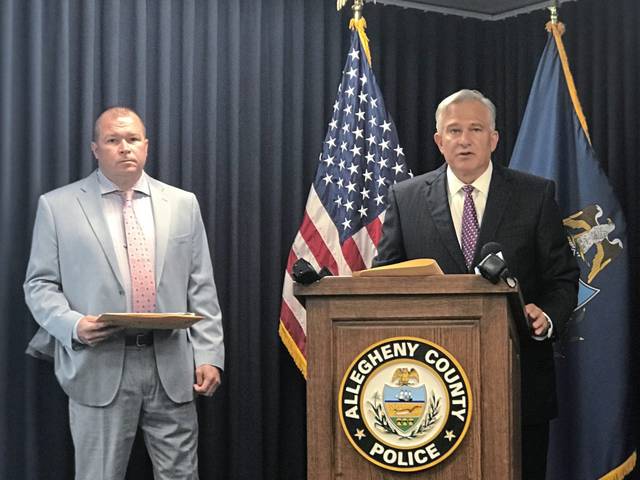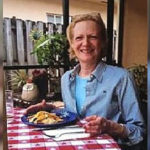The families of Elizabeth Wiesenfeld and Cassandra Gross want closure.
Both women are missing and presumed dead. Wiesenfeld, 67, of Baldwin was reported missing April 30. Gross, 51, of Unity was last seen April 7, 2018.
Authorities believe both women were killed, and suspects have been identified in both cases.
Last week, Allegheny County District Attorney Stephen A. Zappala Jr. announced homicide charges against Douglas Berry in Wiesenfeld’s case. A preponderance of evidence ties Berry to the crime, Zappala said, even though Wiensefeld’s remains haven’t been located.
Despite that evidence, proving it in court is a challenge. A body reveals how the person died and provides the clues that police use to solve cases. Without a body, it’s tough to overcome the reasonable doubt that the victim may still be alive, experts said.
“I’m sure it’s a nightmare for a prosecutor,” said Bruce Ledewitz, a professor at Duquesne University Law School.
It’s important to prosecute such cases, Ledewitz said, because “otherwise you would be rewarding the really effective murderer.”
Bruce Antkowiak of Saint Vincent College in Latrobe and Thomas A. “Tad” DiBiase of Washington. D.C., both former federal prosecutors, agree with Ledewitz. Without a body, prosecutors lack the most important piece of evidence in a murder case.
Wiesenfeld, 67, was reported missing by her daughter. Since then, police have found no traces that she’s alive, and they have evidence that Berry was at her home the morning she disappeared.
[RELATED: Liberty man charged in missing Whitehall woman’s presumed death]
Berry, 47, of Liberty was tied to the case using cellphone records, license plate readers, surveillance camera footage and evidence gathered from a search of his home and truck.
Michelle Seffer, the fiancee of Michael Wiesenfeld, Elizabeth’s stepson, said the family believes Berry will be successfully prosecuted, even without the body recovered as evidence.
“The family’s realistic about this,” Zappala said last week. “I think the chances we’re going to find her at this point are not good.”
Wiesenfeld’s husband William, who died in 2013, worked for more than two decades as a Pittsburgh police officer, retiring from the force in 1991.
No body, no evidence?
DiBiase, a former federal prosecutor in the District of Columbia, studies what he calls “no body” cases and has worked as a consultant in prosecuting them.
DiBiase’s 2014 book “No-Body Homicide Cases: A Practical Guide to Investigating, Prosecuting and Winning Cases When the Victim is Missing” details his research on the subject. He updates cases on his website, NoBodyCases.com.
“When you don’t have the body, you don’t have the best piece of evidence in the case,” DiBiase said. Without a body, prosecutors need to rely on circumstantial evidence — things that require an inference — to connect it to a crime, like fingerprints.
Antkowiak maintains that “you can prove anything in a case by circumstantial evidence.” But having to solely rely on circumstantial evidence also opens the door for the reasonable-doubt defense that attorneys use to help defend their clients, he said.
The issue was famously raised in an anecdote told in legal circles about legendary Philadelphia attorney Richard Sprague.
Sprague was prosecuting a case without a body. The defense attorney going against him used what could have been an effective closing argument: He counted down from 10 and told the jury that when he got to one, the alleged victim would walk in the door, Antkowiak recalled.
The door opened on cue — and the lawyer’s assistant walked in. Everyone’s eyes on the door was enough to prove reasonable doubt, the lawyer said.
In his rebuttal, Sprague is said to have noted that two people didn’t look at the door: himself and the defendant, because they knew the person was dead.
True or not, it was a tremendous way to counter the argument, Antkowiak said.
Proving that someone’s dead without a body as evidence is becoming easier because of the digital footprint people leave as they go about their daily lives, DiBiase said.
“We leave behind these incredible electronic trails: our cellphones, closed circuit cameras, credit card receipts,” DiBiase said. “When those things stop, it’s easier to prove death.”
Technological advances are one of the reasons more of these cases are going to trial now, he said.
In his study of the subject, DiBiase found that since the 1800s, 532 “no body” cases have been tried in the United States — and half have occurred since 2000.
The conviction rate in “no body” cases is higher than that where a body has been found, DiBiase said.
For “no body” cases, the conviction rate is about 87%, compared to 70% for regular murder trials, DiBiase said. “Prosecutors tend to take a strong case to trial” is how he explains the statistic.
DiBiase said he has not been contacted about the Wiesenfeld case.
The case of Cassandra Gross
In Westmoreland County, prosecutors are in a similar situation in the case of Cassandra Gross.
Gross had lunch with a friend on the last day she was seen and talked to her mother by phone afterwards as she drove on Route 30. Baxter, her blind, diabetic dog, was found April 9, 2018, wandering alone in the Beatty Crossroads area. Two days later, Gross’ Mitsubishi Outlander was found burned along a rail line near Twin Lakes Park. State police conducted several searches for Gross in the days and years since, but she has not been found. They now classify the case as a homicide.
Gross was declared legally dead by a Westmoreland County judge in January.
No arrests have been made. After Gross’ disappearance, state police searched two Unity properties belonging to her on-and-off boyfriend Thomas Stanko, 49, who has repeatedly maintained his innocence. Gross’ family believes he is responsible.
Stanko was jailed in the days after the disappearance on unrelated charges. Police have added more unrelated accusations against him over the past 17 months, but those cases have stalled because federal authorities, who accuse him of gun violations, have refused to transport him from their custody to Westmoreland County.
The most recent case in Allegheny County to be tried without a body was the homicide of Patrick Kenney, who was last seen Feb. 2, 2005. Bryan Sedlak of Greenfield was convicted in February 2009 of Kenney’s murder.
Before Sedlak was sentenced, he led authorities to Kenney’s remains. Sedlak’s case is under appeal, but he is serving 18 to 36 years in prison on third-degree murder.
A separate case involved Wilma Lettrich of Tarentum. Lettrich was 26 in 1942 when she was accused of killing her sister’s 8-day-old baby and burning its remains in a furnace.
Lettrich initially confessed to the crime and her life sentence was upheld by the state Supreme Court.

















